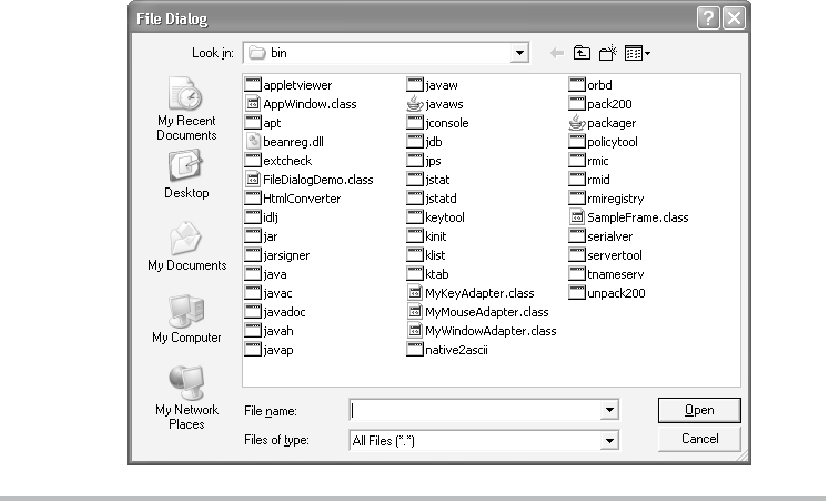f.setSize(100, 100);
FileDialog fd = new FileDialog(f, "File Dialog");
fd.setVisible(true);
}
}
The output generated by this program is shown here. (The precise configuration of the
dialog box may vary.)
Handling Events by Extending AWT Components
Before concluding our look at the AWT, one more topic needs to be discussed: handling
events by extending AWT components. The delegation event model was introduced in
Chapter 22, and all of the programs in this topic so far have used that design. But Java also
allows you to handle events by subclassing AWT components. Doing so allows you to
handle events in much the same way as they were handled under the original 1.0 version of
Java. Of course, this technique is discouraged, because it has the same disadvantages of the
Java 1.0 event model, the main one being inefficiency. Handling events by extending AWT
components is described in this section for completeness. However, this technique is not
used in any other sections of this topic.
When extending an AWT component, you must call the enableEvents( ) method of
Component. Its general form is shown here:
protected final void enableEvents(long eventMask)
Search WWH :


